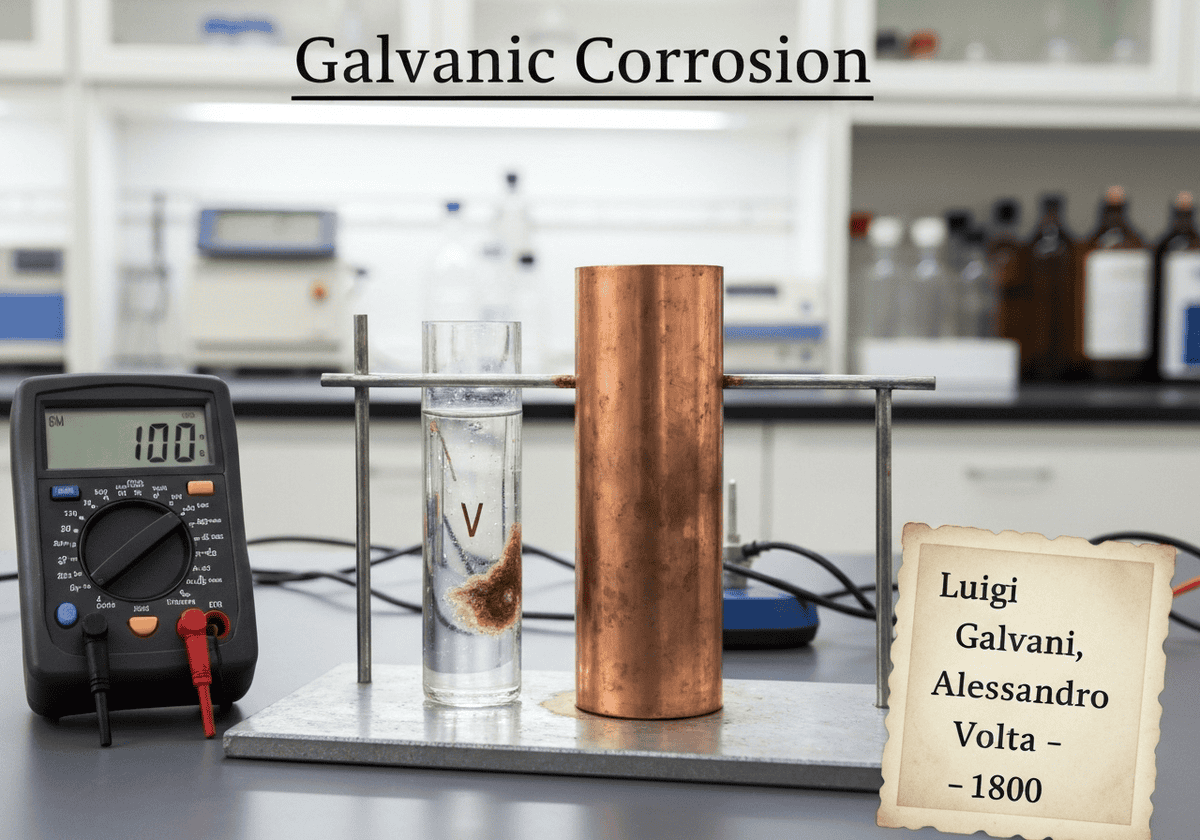电化学腐蚀是一种电化学过程,当一种金属与另一种金属在电解液中发生电接触时,会优先发生腐蚀。发生这种现象的原因是异种金属形成了双金属对,惰性较低(较活泼)的金属作为阳极发生腐蚀,而惰性较高的金属作为阴极发生腐蚀。


电化学腐蚀是一种电化学过程,当一种金属与另一种金属在电解液中发生电接触时,会优先发生腐蚀。发生这种现象的原因是异种金属形成了双金属对,惰性较低(较活泼)的金属作为阳极发生腐蚀,而惰性较高的金属作为阴极发生腐蚀。
The driving force for galvanic corrosion is the difference in electrode potential between the two dissimilar metals. When connected, they form a short-circuited electrochemical cell. The metal with the more negative electrode potential (the less noble metal) becomes the anode and undergoes oxidation, releasing electrons and metal ions into the electrolyte. For example, when zinc is in contact with steel in seawater, zinc oxidizes: [latex]Zn \\rightarrow Zn^{2+} + 2e^-[/latex].
Simultaneously, the more noble metal (with the more positive potential) becomes the cathode, where a reduction reaction occurs. The electrons released by the anode travel through the metallic connection to the cathode. In a neutral or acidic electrolyte like seawater, the reduction reaction is typically the reduction of oxygen: [latex]O_2 + 2H_2O + 4e^- \\rightarrow 4OH^-[/latex].
The rate of galvanic corrosion is influenced by several factors, including the potential difference between the metals (a larger difference leads to faster corrosion), the ratio of the cathode-to-anode surface area (a large cathode and small anode is the worst-case scenario, leading to rapid localized corrosion of the anode), and the conductivity of the electrolyte. The Galvanic Series, which ranks metals and alloys by their electrochemical potential in a specific electrolyte (commonly seawater), is a critical tool for engineers to predict and prevent this type of corrosion by selecting compatible materials.
迎接新挑战
机械工程师、项目、工艺工程师或研发经理
可在短时间内接受新的挑战。
通过 LinkedIn 联系我
塑料金属电子集成、成本设计、GMP、人体工程学、中高容量设备和耗材、精益制造、受监管行业、CE 和 FDA、CAD、Solidworks、精益西格玛黑带、医疗 ISO 13485
电化腐蚀
(如果日期不详或不相关,例如 "流体力学",则对其显著出现的时间作了四舍五入的估计)。
相关发明、创新和技术原理
{{标题}}
{%,如果摘录 %}{{ 摘录 | truncatewords:55 }}
{% endif %}